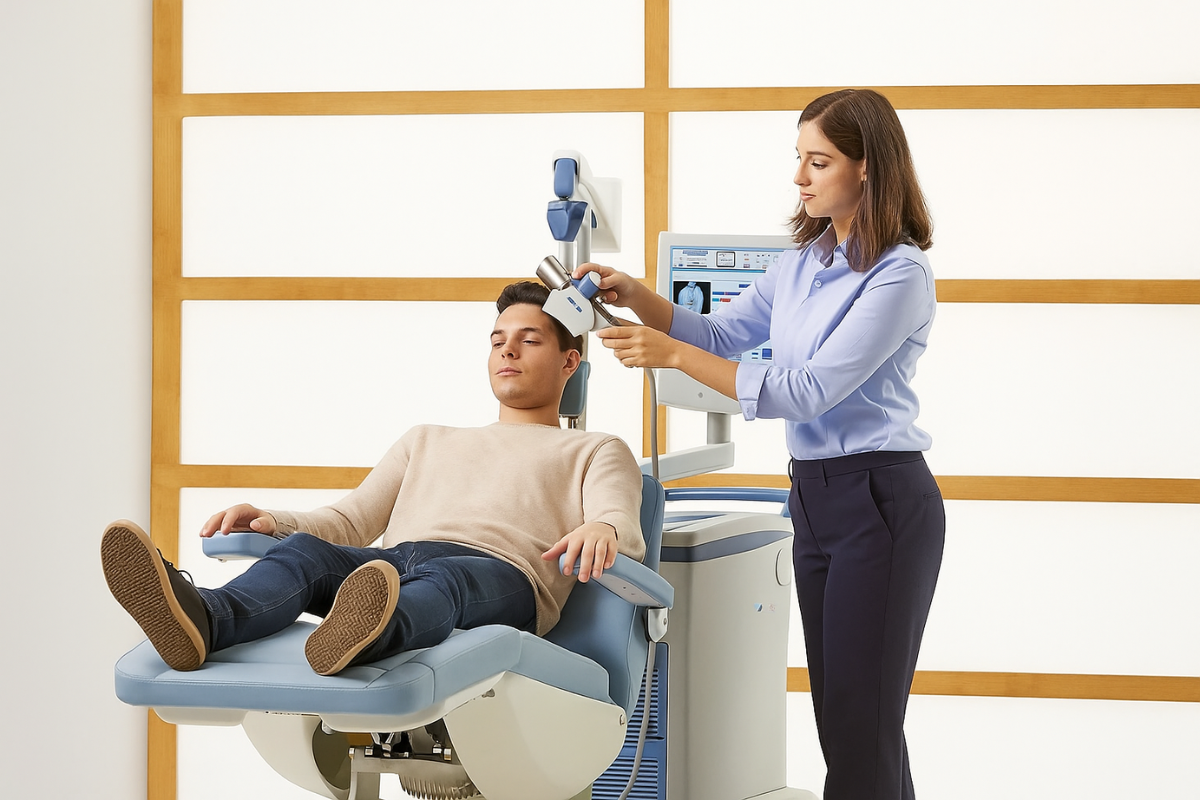
Transcranial Magnetic Stimulation (TMS) has emerged as a promising therapeutic option for mental health conditions, including anxiety disorders. While originally developed to treat major depressive disorder (MDD), research shows that TMS may also alleviate anxiety symptoms by targeting specific brain areas responsible for emotional regulation and stress responses.
How Effective Is TMS Therapy for Anxiety?
TMS therapy has shown considerable potential in reducing anxiety symptoms, especially in individuals resistant to traditional treatments like medication or psychotherapy. By targeting overactive brain regions linked to anxiety, TMS can promote emotional balance and improve quality of life.
Key Findings:
- A 2021 meta-analysis found that TMS reduced anxiety symptoms by an average of 35-40% in treatment-resistant patients.
- A 2020 study published in the Journal of Affective Disorders noted significant improvements in both anxiety and comorbid depressive symptoms among TMS recipients.
While outcomes vary depending on factors like symptom severity and coexisting conditions, many patients report enhanced emotional regulation, reduced worry, and overall improved mental well-being

What Is the TMS Protocol for Anxiety?
The TMS protocol for anxiety is designed to modulate activity in brain regions like the prefrontal cortex and amygdala—key areas involved in stress and emotional regulation. By delivering repetitive magnetic pulses, TMS helps restore balance in these circuits.
Steps in the TMS Protocol:
- Initial Assessment: A comprehensive evaluation of the patient’s mental health history and anxiety symptoms by the TMS physician.
- Brain Mapping: Identifying the target stimulation site, typically the right dorsolateral prefrontal cortex (DLPFC).
- Treatment Sessions: Conducted 5 days a week for 7 weeks, with each session lasting 20-40 minutes.
- Follow-Up: Regular check-ins to monitor progress and determine if maintenance sessions are required.
Protocols may be tailored to individual needs, with adjustments to frequency or duration of sessions based on response.
Benefits of TMS for Severe Anxiety:
- Non-invasive and well-tolerated by most patients.
- Effective for individuals unresponsive to medication.
- Minimal side effects compared to pharmacological treatments.
Patients with severe anxiety may start noticing improvements within several weeks of consistent TMS sessions. However, timelines can vary based on individual circumstances.
Is TMS FDA-Approved for Anxiety?

Currently, TMS holds FDA approval for treating major depressive disorder (MDD) and obsessive-compulsive disorder (OCD). Additionally, it has received FDA clearance for treating anxious depression. While anxious depression is not an official DSM diagnosis, this clearance highlights the FDA’s recognition of TMS’s positive effects on addressing anxiety-related symptoms.
Ongoing research and clinical trials aim to secure FDA approval for TMS as a primary treatment for anxiety, further solidifying its role in mental health care.
Final Thoughts
TMS offers a non-invasive, innovative approach to managing anxiety, particularly for those who have not found relief with traditional therapies. By targeting brain regions critical to emotional regulation, TMS can significantly reduce anxiety symptoms and enhance overall well-being. While not yet FDA-approved for anxiety, its off-label use continues to provide hope and relief for many. If you or a loved one is considering TMS therapy for anxiety, consult a qualified mental health professional to explore whether this treatment aligns with your needs.
Responsibly edited by AI
Other Blog Posts in
Animo Sano Psychiatry is open for patients in North Carolina, Georgia and Tennessee. If you’d like to schedule an appointment, please contact us.
Get Access to Behavioral Health Care
Let’s take your first step towards. Press the button to get started. We’ll be back to you as soon as possible.ecovery, together.





